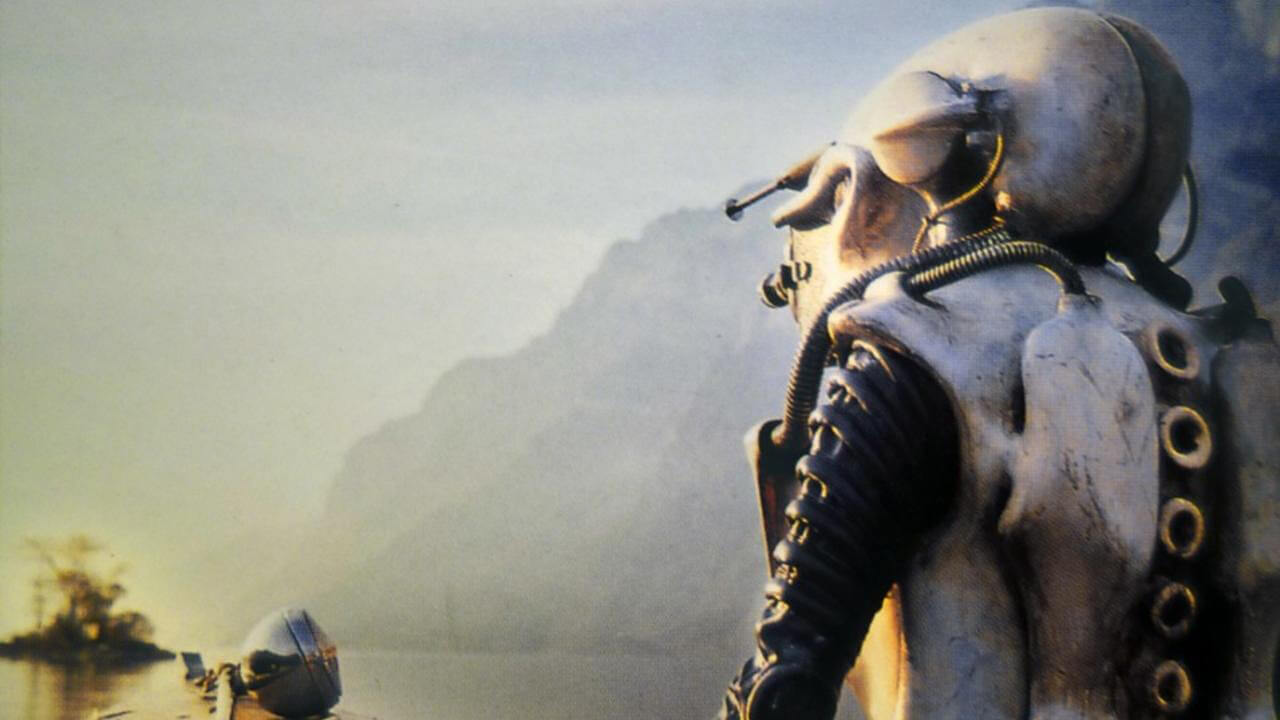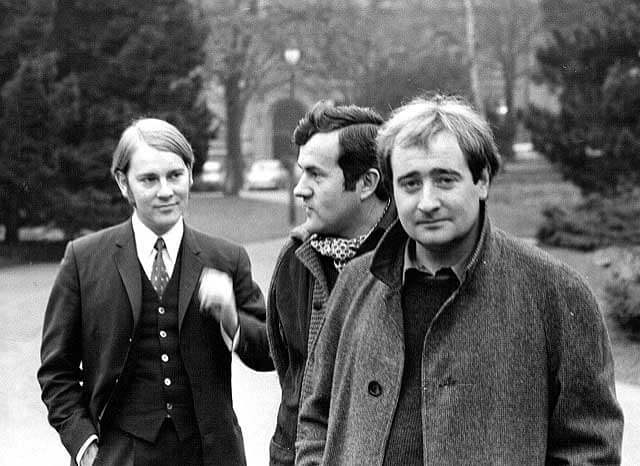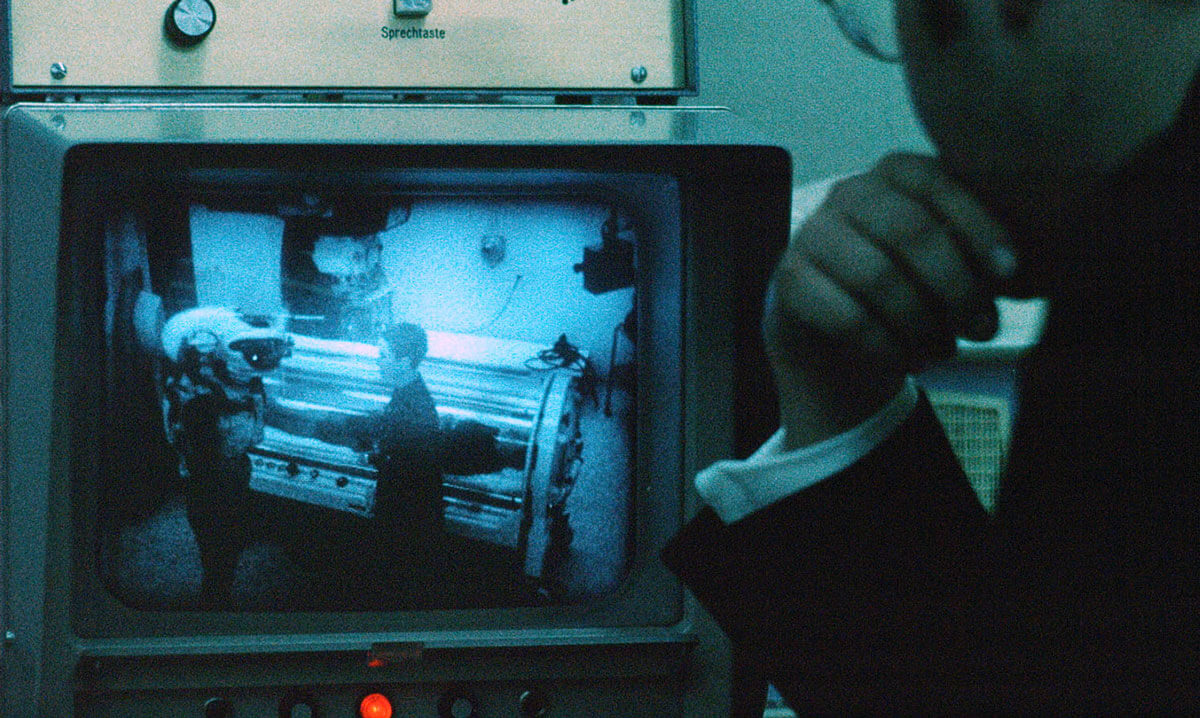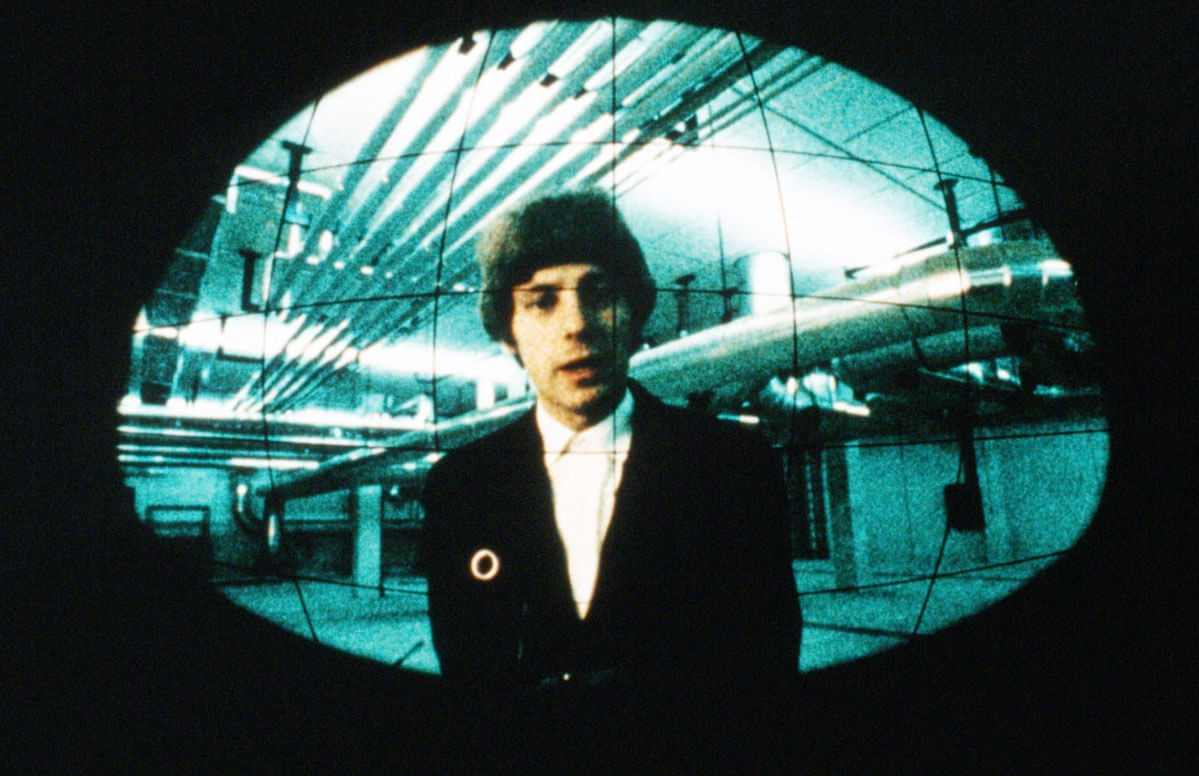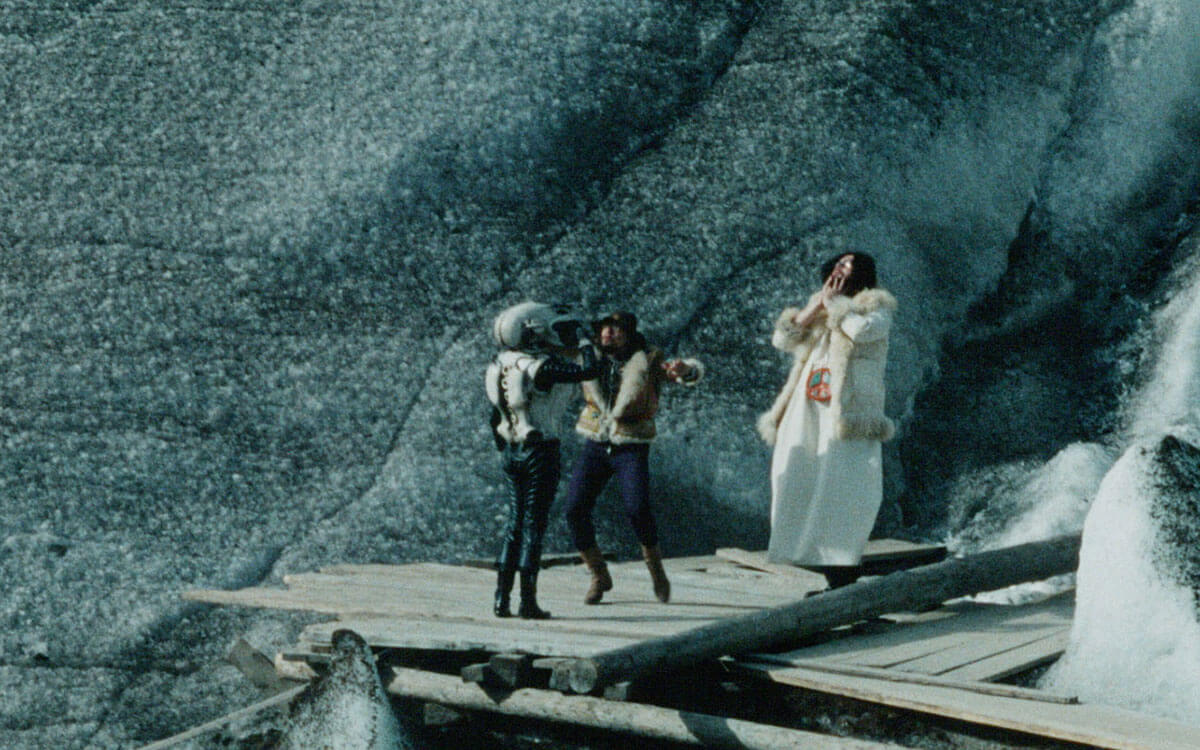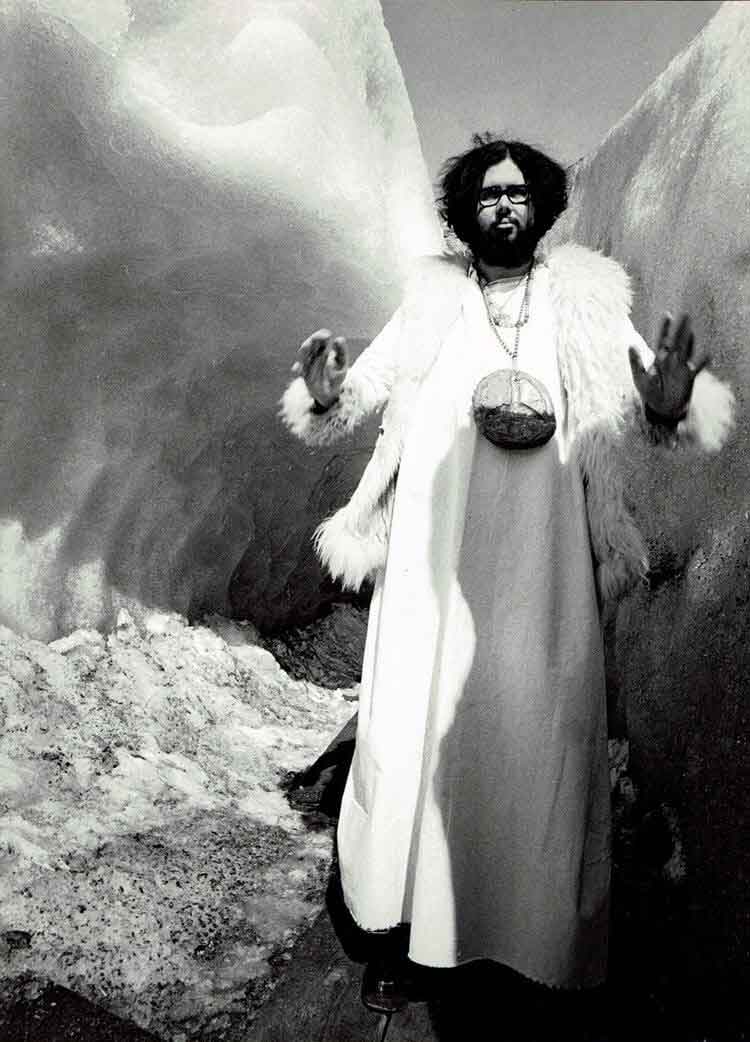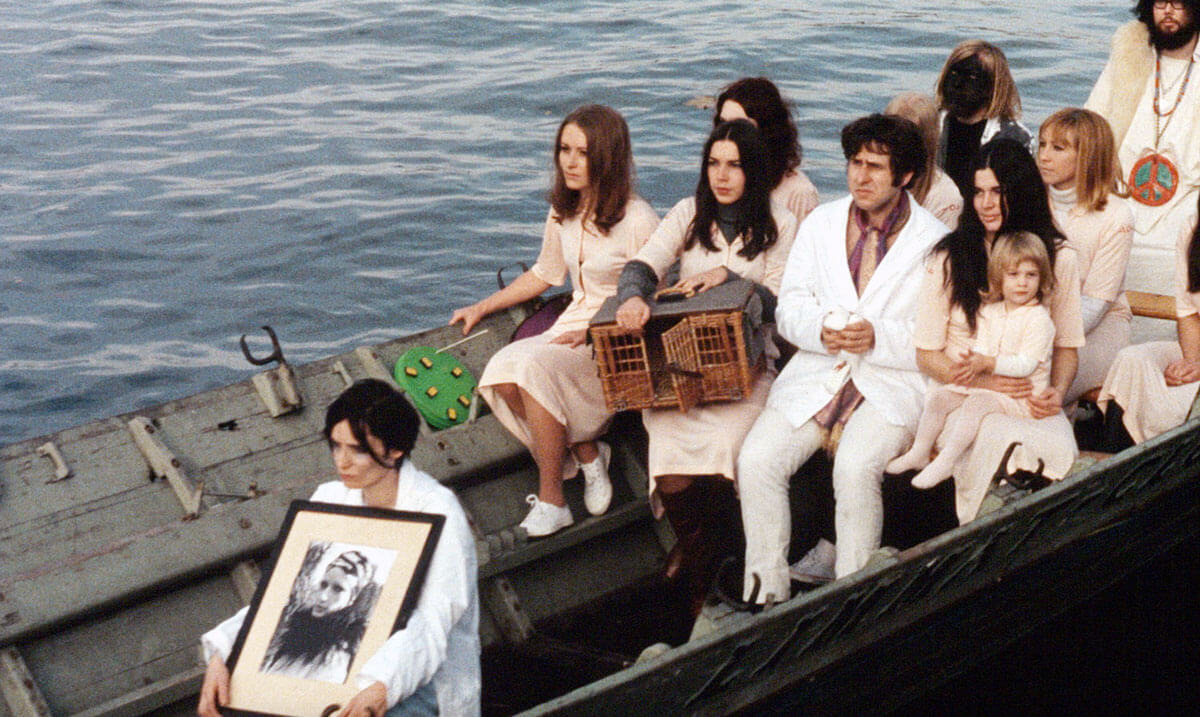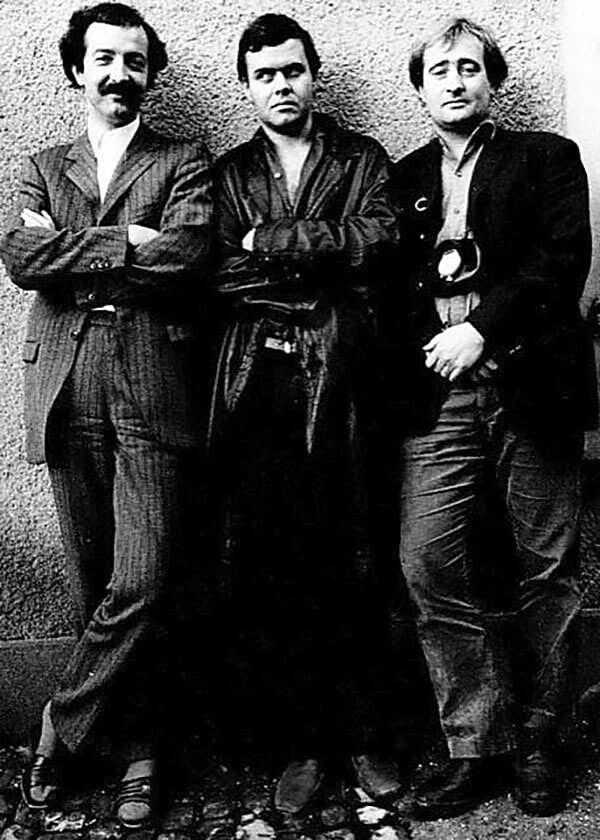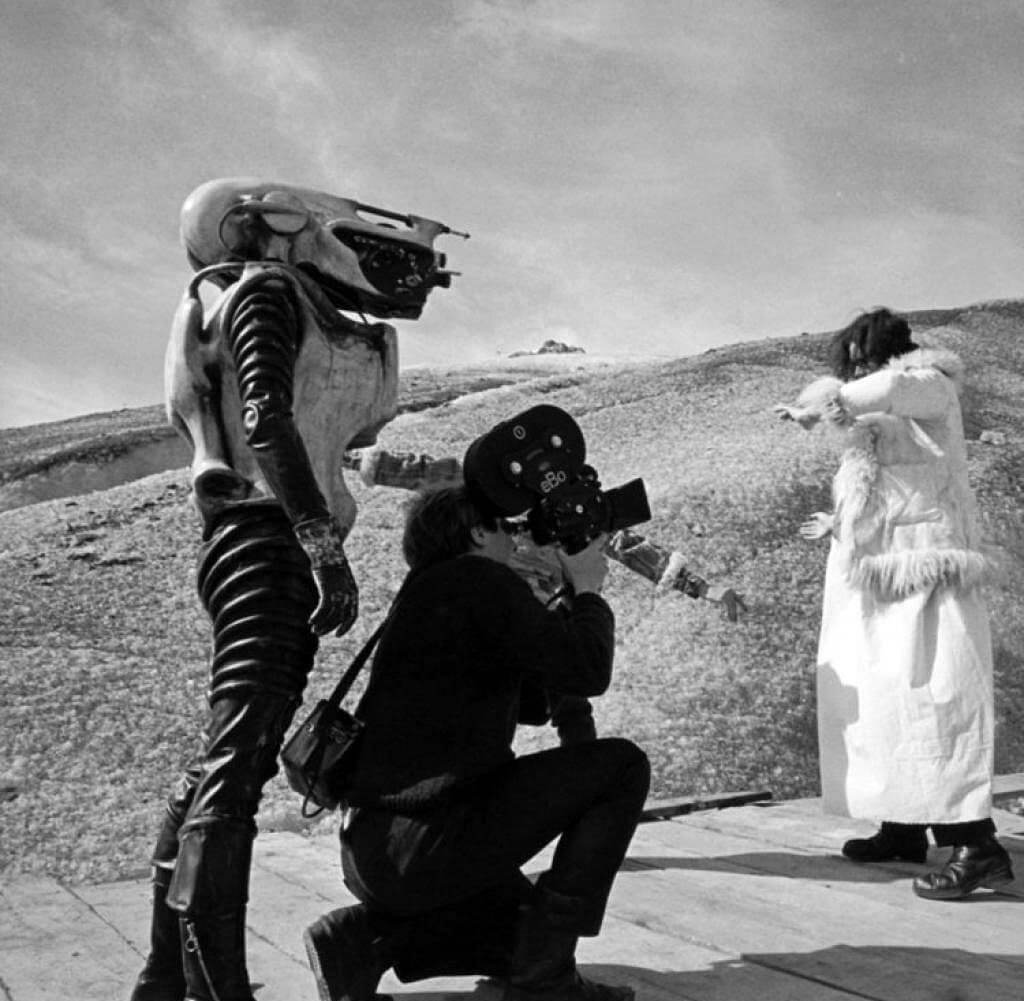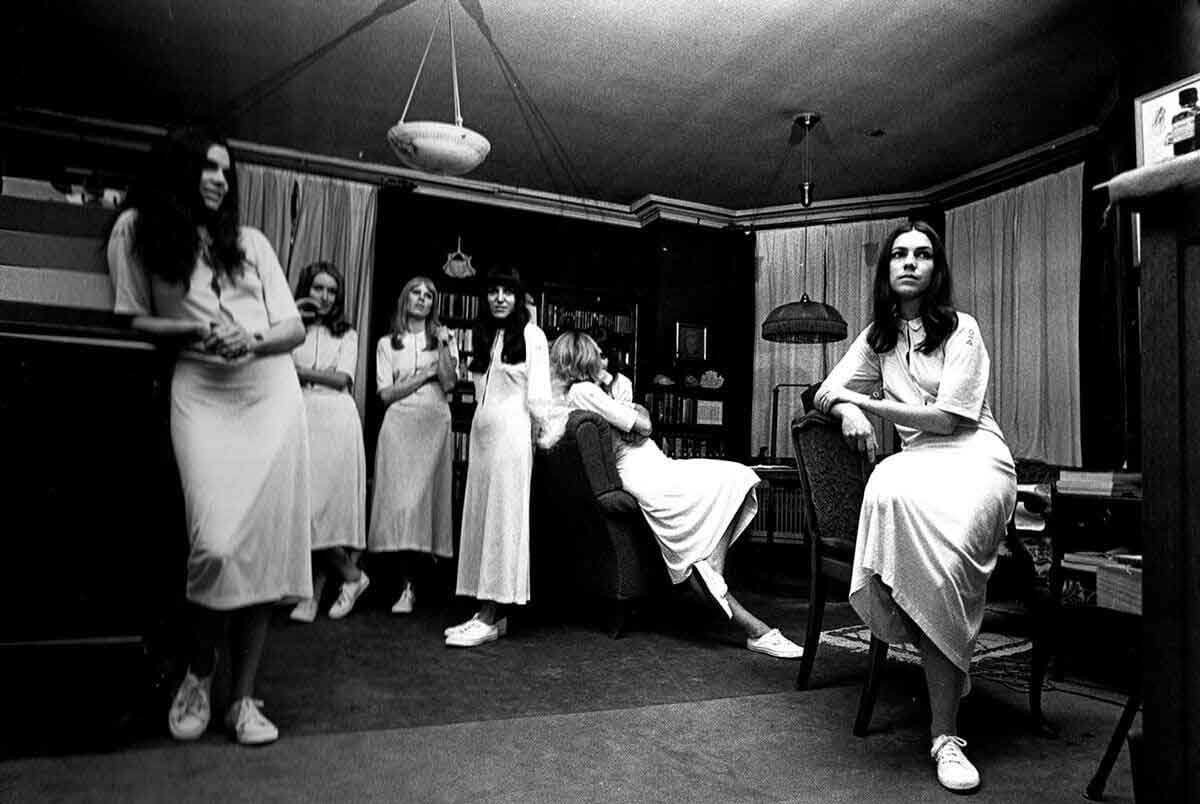”Swissmade is a trilogy of minifilms about the future of Switzerland, the third of which, 2069, is the film that features a young H.R. Giger, early in his film career.
The Boss
Being an old admirer of Giger, I had long hoped to watch his first film work, the medium-length film ‘Swiss Made 2069’, which had been missing for many decades.
One day, coinciding with the announcement of the dissolution of Daft Punk, I remembered this curious cinematic experiment by the good H.R. in collaboration with his friend the director F.M. Murer, author of the documentary ‘Passagen’ dedicated to Giger himself.
Attempting yet another search on the web, believing it to be unsuccessful again, I found with great surprise a link to a 39-minute video: another old dream realized thanks to the web.
Swissmade is a trilogy of minifilms about the future of Switzerland, in the first, ‘1980 (Der Neinsager)’ by Yves Yersin, a revolutionary who returns from Brazil and discovers that his fellow revolutionaries have lost their initial determination and enthusiasm. He is seen as a caricature of the past and will end up being an actor in a commercial for a bank.
The second film, Fritz E. Maeder’s ‘Alarm’, sees a worker who wants to rebel against the system and a hag wife.
The third is our ‘2069’.
Swissmade 2069 is written and directed by longtime Giger collaborator Fredi M. Murer, and Giger’s footprints are everywhere in the film.
The script comes from a doubt, what will Swiss society be like in 100 years?
The world of 2069 is a set of corporate states that are each led by their own ‘Brain Center’, an AI computer that manages and monitors citizens in their every move. Everyone brings a camera and says goodbye by taking pictures.
Citizens can and must periodically contact the “Brain center” from countless “Braincorner” intercom columns. Nothing can happen without strict control, the deterioration of food data is also recorded, for which an alert system has been set up.
It is a complacent population, which voluntarily commits acts of self-surveillance and patriots are marginalized and dismissed as insane, for wanting to get away from this society of control.
It is the citizens themselves who submit “voluntarily” to this self-defined ‘Total Scientific Democracy’ based on mind-reading, the lack of individuality and choice: every decision is made by the AI, which also manages the sexual relations between citizens with the ” calculation of the ideal daily companion ”which is communicated to the applicants through the Braincorners.
Sexual relations are kept strictly occasional to maintain a social distance that prevents people from being able to unite in possible subversive associations; also the job duties and the workplace are constantly changed so that people do not come to establish relationships of interpersonal mutual knowledge.
All forms of emotion, including those deriving from contact with nature, are banned.
Families are tightly planned and managed and the children of the typical family are a couple of twins.
The maximum age at which it is allowed to reach is 41 years, after which they are eliminated.
A “citizen integrated into the system but with a latent tendency to move away from it” is commissioned by the “Brain Center”, the AI that controls society, to produce a film report on the unknown mission of an alien being. The alien is an extraterrestrial with a built-in Bolex camera, a microphone and a Nagra tape recorder, traveling around planet Earth in 2069 to explore its current conditions.
A “philosopher”, in his studio located in a sort of large cathedral-villa, where he lives surrounded by a team of 7 young “helpers” remotely controlled by himself through various audio frequency impulses, is studying the system to be able to transform Switzerland into a place where the various corporations-states can, by paying, get rid of the system’s dissidents in special reserves.
The last thought collected is that of a technocrat who underlines – addressing the peaceful visitor with vigor and contempt – how successful this system of Totalitarian Democracy is, since, being based on the collection of data processed and managed by the computer, «There are no superior or subordinates citizens. Don’t you know anything about our Democracy? Which developing planet do you come from?»
The silent observer collects thoughts and testimonies of various types of the humanity of this dystopian world, from aligned to dissidents (with a preference towards the latter), to then be kidnapped, deprived of camera and recorder (head and heart) and then normalized by “scientists” of the Brain Center, with faces hidden by a surgical mask, preventing him from returning and being able to bring help to his world.
After this last terrible act, “thinking humanity” waves a symbolic white flag in flames and prepares to completely abandon this robotic society.
A veiled criticism of Swiss society appears quite clear: Switzerland is now shown as completely absent from the map of Europe, in its place there is now an immense lake, like an inland sea.
The outcasts have gathered on a boat and set off on the lake towards the horizon, leaving this society for good.
The finale shows what the alien’s “developing planet” will look like sometime later, seeing it hopeless.
The film journalist is played by Murer himself. All participants in the film were, in real life, authentic 1968 activists, some of whom later pursued a career in politics or art.
In a short scene there is also Li Tobler, the then companion and muse of Giger, who appears in the film as an artist/eminence who produces the plans of this dystopian society, a sort of ‘Architect of the Universe’ who interfaces with the Brain Center through an armchair with terminal, anticipating the station with which the crew of the Nostromo communicated with the system computer ‘Mother’ in the ‘Alien’ movie, an idea that will also be developed in the famous ‘Logan’s escape’ but even in the George Lucas’ ‘THX1138’ confessional.
It is almost superfluous to underline that even the alien itself of Swissmade 2069 is a clear anticipation of the Xenomorph of the film Alien, just as the Brain Center is a version in swaddling clothes and without ‘filters’ of the computer Mother.
We close by pointing out the obvious similarity between the character of the alien observer and that of Thomas Jerome Newton, the protagonist of Walter Tevis’ novel ‘The Man Who Fell to Earth’. Similarity made even more evident by the final scene of 2069 with those depicting the planet Anthea in the film version of the Tevis novel directed by Nicholas Roeg.
A RARE EXTRACT FROM A TV SPECIAL ON GIGER AND “SWISS MADE 2069”
Credits/Cast
Buch, Regie, Kamera, Schnitt: Fredi M. Murer
Aufnahmeleiter: Giorgo Frapolli
Ton: Christian Kurz
Foto: Doris Quarella
Future-Design: H. R. Giger
Science-Couture: Silvia Wolfensberger
Labor: Cinegram SA, Zürich/ Genève
Lichtbestimmung: Johannes Anders
Mischung: Bruno Müller / Sonorfilm AG, Bern
Trick: Charly Kresling / Probst film, Bern
Sprache: Hochdeutsch
Dauer: 40 min
Originalversiont: Farbe, 35mm
Verleih: FMM Film Verleih
Cast:
Humanoid (visitatore): Tina Gwerder
Reservatbewohner (abitanti della riserva)
Asther Altorfer, Hannes Bosshard, Carmen Corti, Ivett Epper, Kurt Eler, Kiky de Groot, Manon Küng, Anna Leskinnen, Ruth Murer, Sabine Murer, Robi Müller, Toni Holz Portmann, Lili Schiess, Hans Stamm, Verena Voiret, Paul Weibel
Integrierte Staatsbürger (cittadini integrati)
Dieter Ackerknecht, Gianni Bacchetta, Elisabeth Besmer, Sylvia Besmer, Alex Böckli, Pino Bühler, Ines Diemer, Doris Ehrler, H.R Giger, Cornelia Grossmann, Thomas Held, Peter Hürzeler, Daniela Indemini, Andreas Kappeler, Regine Kappeler, Su Kappeler, Bruno Klieber, Frieda Kurz, Egon Meichtry, Margrit Röllin, Raymond Scholler, Li Tobler
Credits
Thanks to the site of the director F.M. Murer for the images.

